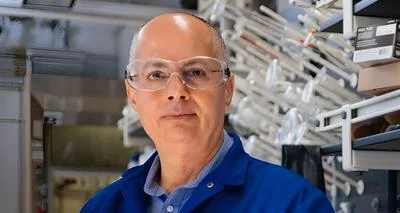Laurie McCauley Provost and Executive Vice President for Academic Affairs | University of Michigan-Ann Arbor
Laurie McCauley Provost and Executive Vice President for Academic Affairs | University of Michigan-Ann Arbor
Researchers from the University of Michigan and Carnegie Mellon University have introduced a new online tool designed to expand the use of environmentally friendly chemistry. The tool, described in a study published on October 1 in Nature and supported by the U.S. National Science Foundation, aims to remove obstacles that limit broader adoption of biocatalysis.
Biocatalysts, or enzymes, are proteins that perform chemical reactions efficiently, often under mild conditions such as room temperature and water. This avoids the need for toxic or costly chemical reagents. However, enzymes are typically very selective and only work with specific compounds found in their natural environments.
Alison Narayan, professor of chemistry at the University of Michigan, explained: “Biocatalysis offers a more sustainable way to build molecules, and it can also give us access to molecules that we couldn’t build using traditional chemical methods. But most of the known substrates for these biocatalysts come from nature, which is just a very small subset of the molecules that chemists work with.”
Narayan’s team sought to bridge this gap by matching proteins with potential substrates on a large scale. Alexandra Paton developed a high-throughput reaction platform to test over 100 substrates against each protein within an enzyme family.
“We discovered hundreds of new connections between chemical space and protein space and built this diverse dataset,” said Paton, who was a postdoctoral fellow in Narayan’s lab and is now an assistant professor at University of Rochester. “That is when we began to think more broadly about what we could build with all this data.”
The team collaborated with Gabe Gomes at Carnegie Mellon University and Daniil Boiko, then a graduate student in Gomes’ lab. They used machine learning techniques to create an enzyme recommender system based on their data set.
The result is CATNIP, an open-access online platform where chemists can input starting compounds to receive ranked lists of suitable biocatalysts from the studied protein family or identify possible substrates for specific enzymes. Boiko compared its function to a web search engine: “optimizing the results to ensure the best answers—or the most promising candidates—appear at the top of the list in ranked likelihood of their success.”
Paton added: “It is a great starting model to enable synthetic campaigns using biocatalysts. And there is already work underway to begin expanding the database beyond this one enzyme family.”
Additional support for this research came from organizations including Novartis Global Scholars Program, Camille Dreyfus Teacher Scholar Award, and the University of Michigan. Other contributors include Jonathan Perkins and Nicholas Cemalovic (University of Michigan) and Thiago Reschützegger (Federal University of Santa Maria).






 Alerts Sign-up
Alerts Sign-up